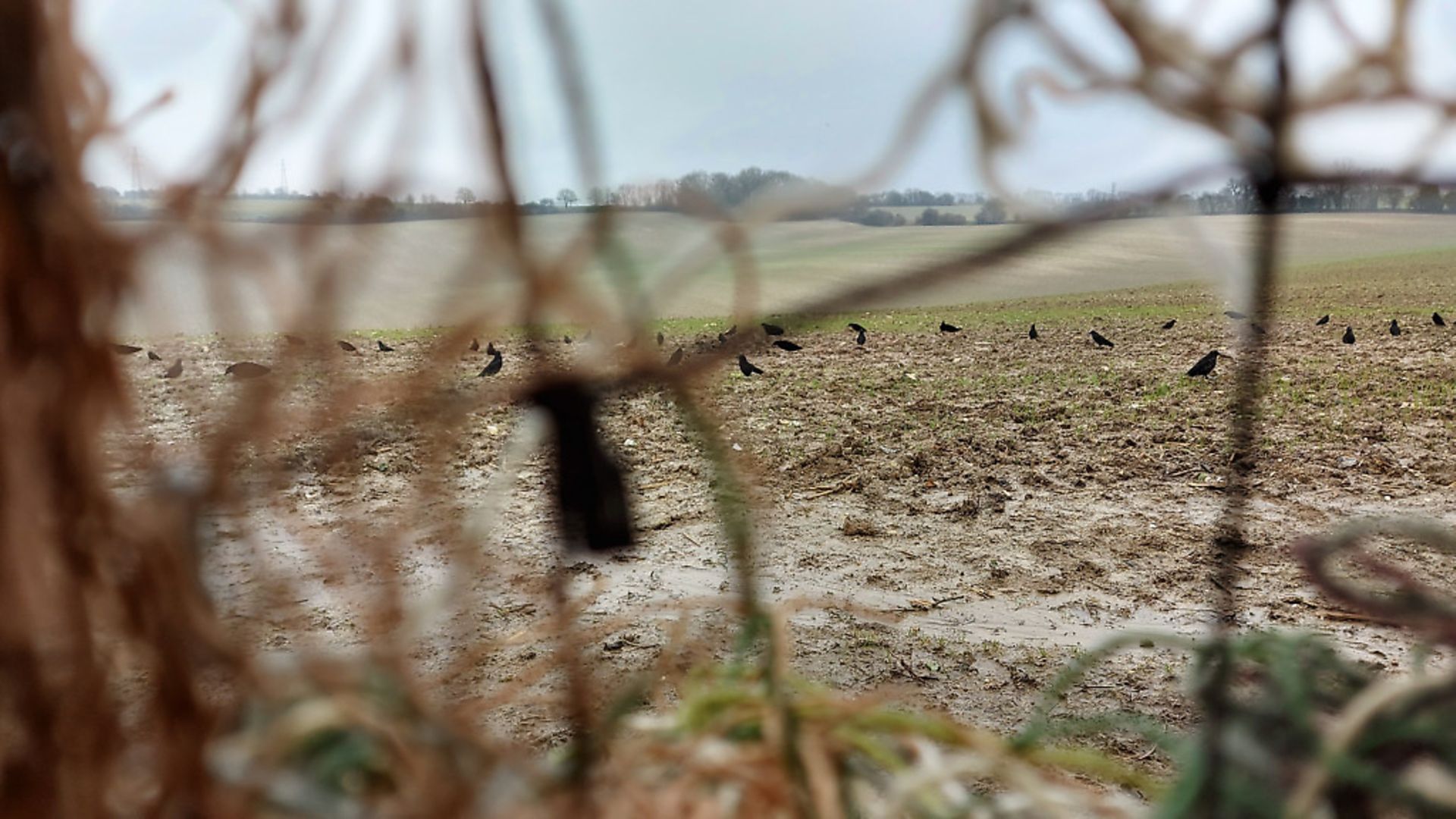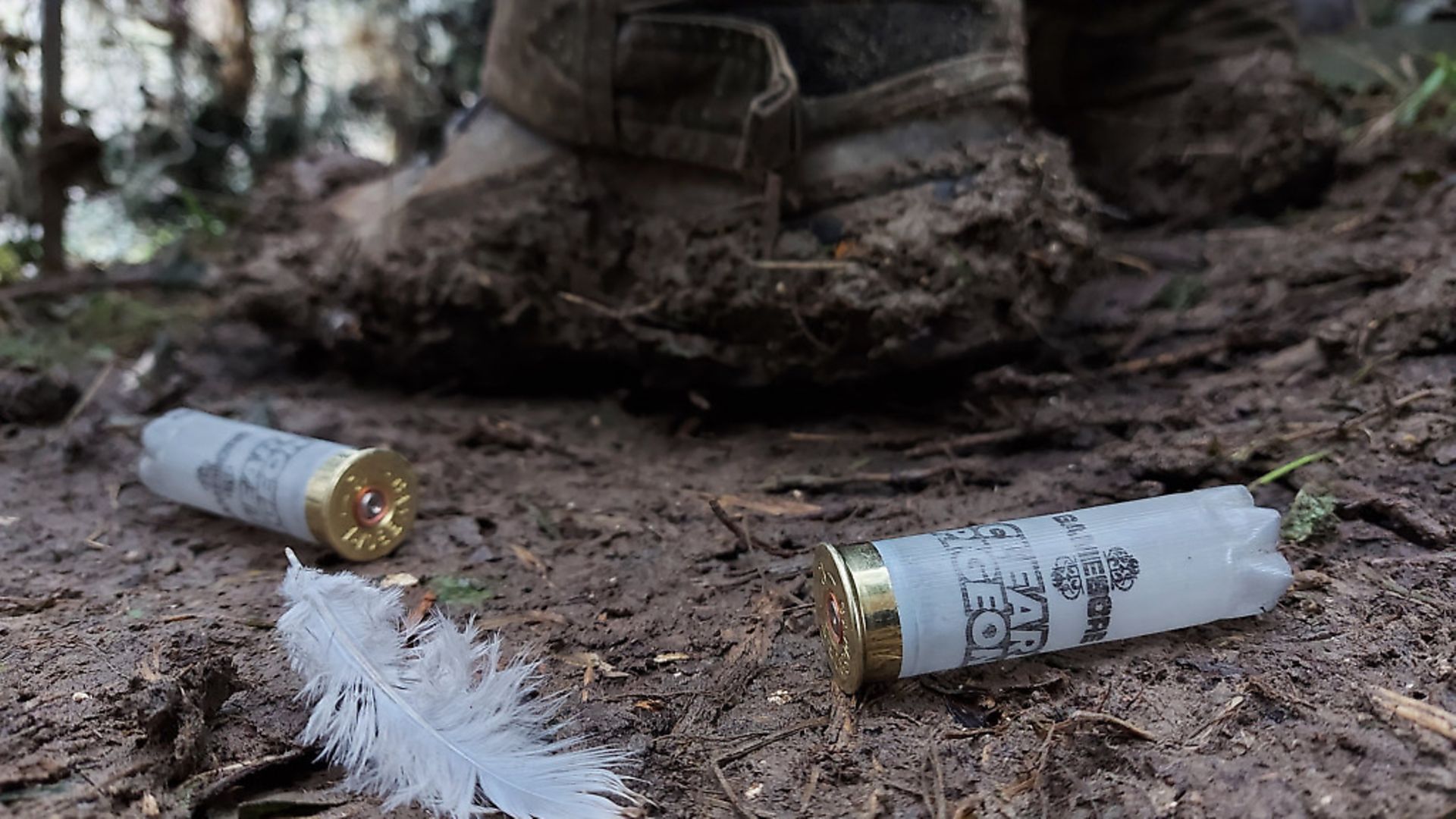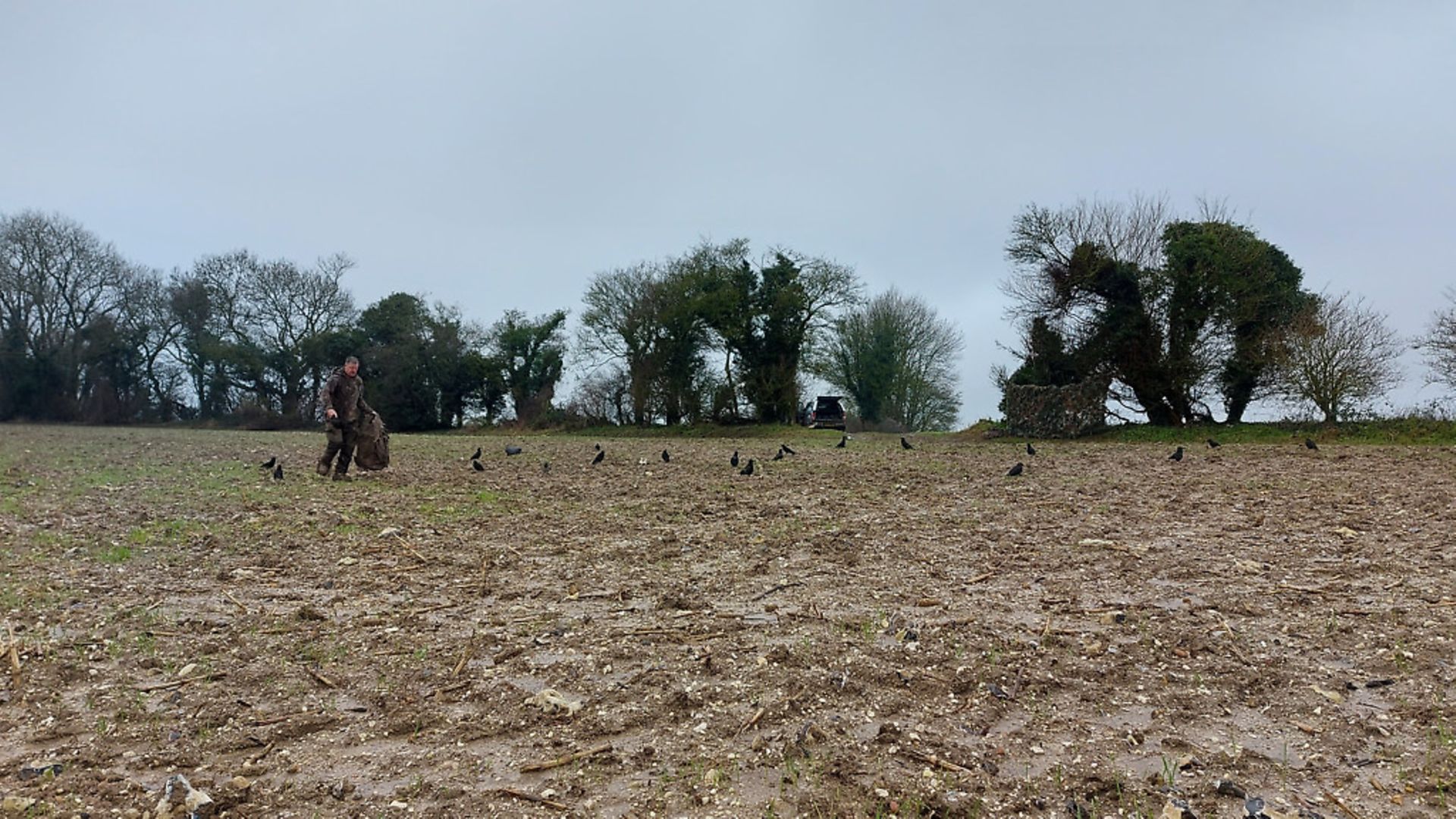Andy Crow is shooting the crows that are destroying his winter wheat; the conditions are tricky, but this Crow isn’t easily put off!
We are finally back at Crow’s farm on the driest day of what can only be described as a miserable month. In the days running up to our visit, the crows have been making life difficult for the farmer by feasting on the emerging shoots of a winter wheat crop, and then going in for the kill and digging up the seeds from the sodden soil. It’s cold and dismal, and the heavy mist lying in dips across the vast farmland dictates a slightly later start than usual – too early and visibility will be slim to nothing.
After a 9.30am arrival, we begin our trip around the farm to scope out the resident crow population and work out where to set up. Two hours later, we are still on our seemingly never-ending recon mission, scanning the skies for high-flying birds choosing similar paths of flight, but to no avail.
The main hold up is the wind – it is changing speed and direction relentlessly, making the job of identifying a main flightline nigh-on impossible. The crows are coming and going from all angles, and eventually we arrive back at the sweeping, basin-shaped field of winter wheat drillings we started at. Being a farmer, and constantly on the land, Andy has a good idea of where the birds like to feed, and had seen huge numbers of crows feeding on this field just days ago; setting up here is the safest bet in such tricky conditions, and with Crow’s mind made up, it’s finally time to get the hide decoys out and hope for the best.
The main concern when crow shooting is convincing them that nothing is out of the ordinary. Crows are clever birds with exceptional eyesight, so the hide needs to be perfectly blended into its surroundings, and the decoy pattern as realistic as possible. Andy chooses to tuck the hide well into a deep hedgeline that separates this field from the next. Setting it against a thick, dark area of foliage serves to hide his silhouette, and a taller, ivy-laden clump of trees just to the right acts as a barrier to the eagle eyes of any birds coming from the bottom of the field. Tall nets keep him hidden from anything flying straight on to the hide.
Due to the large numbers seen feeding on this field in the days leading up to our visit, Andy knows that a big, highly visible pattern is required to convince the canny corvids that all is well in Crow-land. “I’ll start with at least two dozen decoys and use a mixture of full-bodied flocked decoys, and some Sillosocks for gentle movement,” he says, spiking decoys into the ground at various angles. “I might add a flapper later, and if I do, it’ll be on a slow setting – crows fly a lot slower than pigeons and only flap fast when they are startled by something and trying to escape, so a fast flapper will only put them off.
“You also want the pattern a bit closer to the hide than you would for pigeons, so I’ll put the first ones no further than 10 yards out, and the furthest ones no more than 25 yards out. Crows have really fast reactions and you want them as close as possible when you pop up to take the shot, so that when they flare up and away as they spot you, they’ll still be in range for the shot.”
 credit: Archant
credit: Archant
At just gone 11am, Andy and Rosa the Lab finally tuck themselves into the hide and wait for the action to start... which it does, steadily. Andy is managing to bring down some nice birds as they sail over in ones and occasional twos, but after the first couple committed, it’s clear that something about the pattern is now putting the rest of them off. You can clearly see them altering their flight path as they spot the pattern, starting to commit, and then veering away just before they come into range. We persist for a while, but before long Andy’s had enough, and nips out of the hide to try and see from the crows’ angle what it is that’s bothering them. The hide is still looking good, and presents no obvious explanation, so it’s time to look at the pattern.
“Crows have really good eyesight, and if they spot something like this it’s going to put them off,” says Andy, pointing to a very obviously dead crow lying on its back, wings outstretched like a slain maiden. “That’s why it pays to have a regular clean up.”
He also adds a flapper in to see if it will tempt the corvids in a little closer.
Back in the hide, it’s still hard going, but considering the far from ideal conditions he’s starting to build a tidy bag. The clean up and flapper definitely seems to have helped, but they’re still not consistently decoying, and Andy pulls off some incredible shots on the higher birds. His shooting technique is noticeably different today – he is crouched extra low in the hide, and as the crows come into range the barrels go up, latch on, and Andy presses himself closer into the net, tracking the bird through the camouflage and popping up for a swift, decisive shot at the very last second. It’s impressive to watch, and even more so when you realise how tough these birds are – they’re like avian terminators – and that they must be hit hard and true in the right spot to be brought down, otherwise they simply shake their heads, flip you the finger and fly on.
We stick it out until gone 4.30pm, hoping to boost the bag as they come in for a late feed, but despite things getting a little busier after lunch, there’s no doubt that it’s now dried up and time to go home and defrost. It’s not a record day by any stretch of the imagination, but given the conditions we were working with, It’s not a bad final count of 34 crows and eight pigeons. Whichever way you look at it, that’s 42 fewer crop-destroying birds to worry about, and some damn good sport had in the process. Andy shoots pigeons and crows for a very good reason – to protect crops. It may be fun, but it’s not for fun. When you have a serious job to do (and have to fit it in around your other work), you can’t always wait for the perfect conditions. Knowing how to make a less than ideal situation work for you, and always having a Plan B, means you will never be left scratching your head with an empty bag at the end of the day. Thanks to Andy, the crop is safe from the beaks of these feathery little terminators for today.
On that note, I’ll end with a rather fitting quote from Terminator: “The future has not been written. There is no fate but what we make for ourselves.”
 credit: Archant
credit: Archant
 credit: Archant
credit: Archant